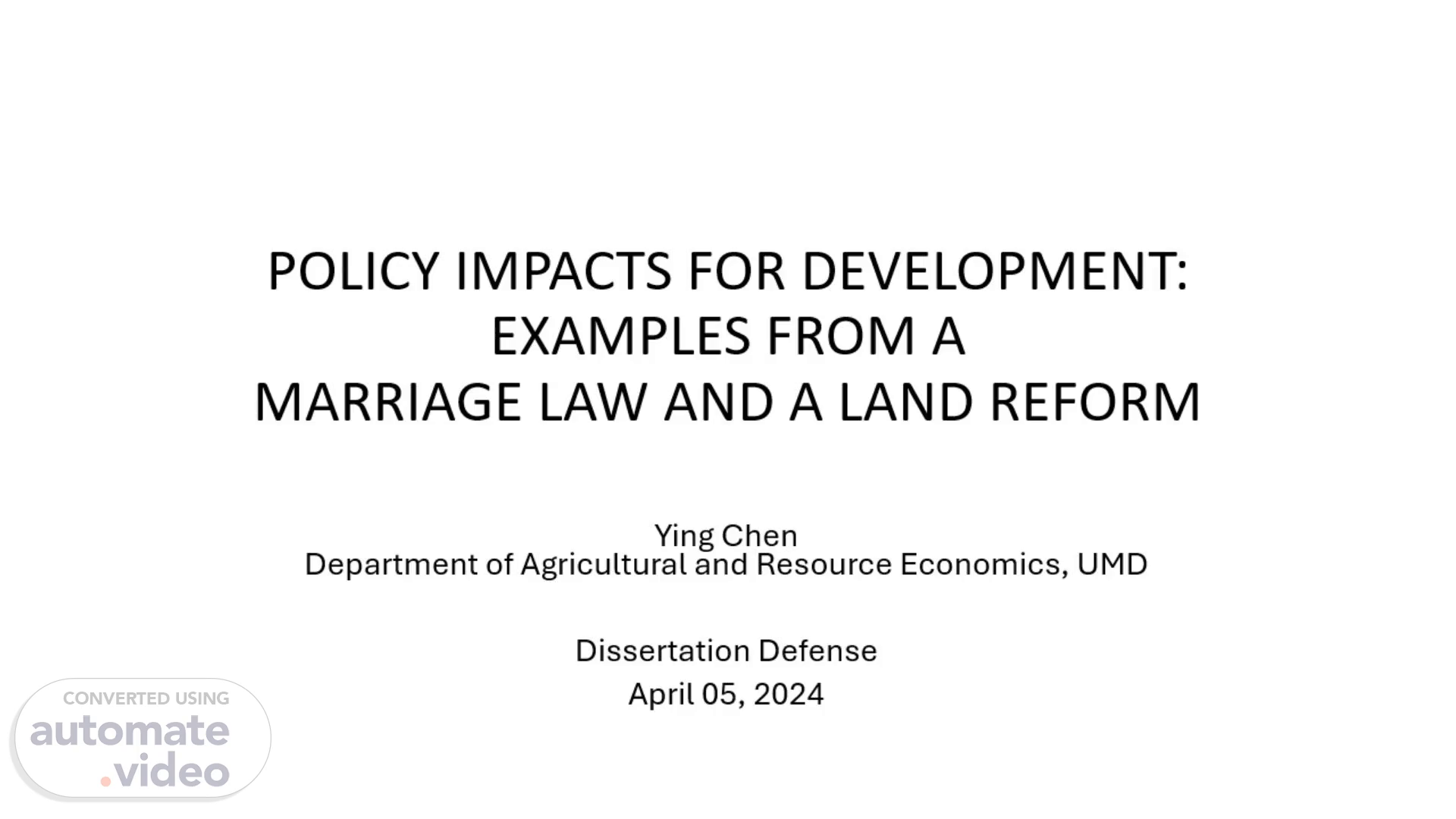
POLICY IMPACTS FOR DEVELOPMENT: EXAMPLES FROM A MARRIAGE LAW AND A LAND REFORM
Scene 1 (0s)
[Audio] Welcome to my dissertation defense. This defense will be narrated by an AI..
Scene 2 (10s)
[Audio] My dissertation has three chapters.. Introduction.
Scene 3 (25s)
[Audio] The first chapter is entitled "Marry Early or Not? The Effects of Age-of-Marriage Laws: Evidence from Indonesia"..
Scene 4 (34s)
[Audio] Globally, around 20% of women aged between 20 and 24 years old get married before their 18th birthday. 55 of them get married at an age even younger than 15. Where does child marriage happen most? 37% Many efforts have been made to prevent child marriage, Despite large decline in child brides over the last decade, Conversely, interventions that delay marriage or cohabitation deliver a host of benefits..
Scene 5 (1m 8s)
[Audio] As people become informed about the adverse consequences of child marriage, the natural reaction is to call for policy interventions to eradicate it. The easiest intervention to implement at scale to eradicate child marriage - or so it seems - is to ban it. From a policy perspective/point of view: what did these age-of-marriage laws actually accomplish? Did they improve the well-being of women as they should do? If yes, how? If not, why? Is simply raising the marriageable age for women sufficient to bring social changes Out of these well-meaning-laws. There are still a lot of countries allow child marriage with and without consent, and some countries considering increase or even decrease the minimum age of marriage. It is much more a problem of poverty where the parents are compelled to marry off their daughters early for reasons of survival after careful consideration。 They might be counterproductive.
Scene 6 (2m 2s)
[Audio] No ready-made answers to these questions Variation in physical maturity raising the minimum age of marriage may not be effective in societies where informal unions are a viable option for young couples as people switched from formal marriage to informal union outlaw early marriage may not meaningfully deter the practice, We also find that the introduction of new laws typically results in less enforcement. This indicates new laws may not be complemented by effective enforcement..
Scene 7 (2m 37s)
[Audio] Different identification strategies leads to different interpretation/implications of the results/effects of delayed marriage However, while statistics indicate that women who marry young fare worse, it is difficult to assess the extent to which these outcomes are driven by the timing of marriage as opposed to common factors related to poverty and traditional gender views that also hinder female advancement. Given that child marriage is most common in impoverished and culturally traditional settings, the observation that women who married young have on average less education does not imply that forcing girls to postpone wedlock would improve their outcomes..